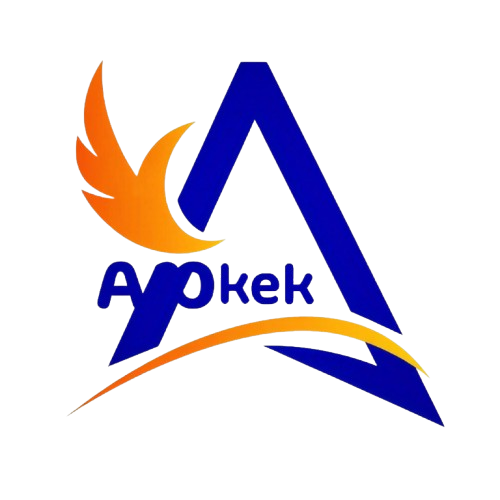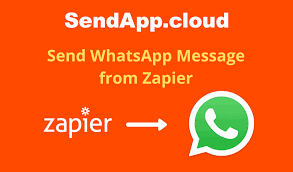In today’s connected world, sharing information across platforms with little friction is more than just a convenience it’s a necessity. Not only is this vitally important for businesses, individuals and enterprises alike, but API-powered communication is just as critical to efficiency, streamlining data entry, and receiving instantaneous notifications that save lives. And while many services offer fully functional APIs—a process called exposing an application’s code to other software—integrating them with one another requires extensive coding skills. And that’s where a powerful automation tool like Zap Web comes in—serving as a universal translator between your favorite web services and your favorite messaging app like WhatsApp.
Understanding the Power of Automation: Zapier as the Middleman
Zapier is a no code automation platform that lets you connect thousands of web applications together. It’s based on the idea that “when this happens, then do that. ”In the Zapier terminology, a “Zap” is an automated workflow. The trigger is the event that initiates the Zap (i. e. ‘When a new form is submitted’) and the action is the event that Zapier executes as a result (e. g. ‘Send a WhatsApp message’). This means that you can create detailed, multiple step automatations without having to write a single line of code so that advanced integration is accessible to everyone.
Why Connect Web Services to WhatsApp?
WhatsApp Web has evolved from a simple personal messaging app to an essential communication channel for businesses. With over two billion users globally, it offers unparalleled reach and high open/engagement rates. By integrating your core business apps with WhatsApp web, you can leverage this channel to deliver actionable notifications: Imagine a sales team receiving an immediate WhatsApp message when a new lead fills out a contact form. Or a support team receiving an instant notification when a high-priority ticket is logged. With this immediate alert, response times will be much faster, customers will be happier and operational efficiency will improve drastically.
Setting Up Your First Zap: From Web App to WhatsApp
On a personal level, it’s super easy to get started. You’ll first need accounts for both Zapier and the WhatsApp Business Platform (as this can usually be accessed through a service provider like Twilio). Next, you’ll go to the Zap website and create a new Zap, choose your trigger app—these can be Gmail, Google Sheets, Typeform, Shopify, or any of the other apps available. E. g. You might choose “Google Forms” as your trigger, and then do the follow-up by select the exact form that you’d like to monitor for new submissions.
Configuring the WhatsApp Action
Once you have your trigger set up, it’s time to decide what action you want to take. Go to /whatsapp and search for the WhatsApp app you want to take action on. Your app will be prompt to connect your account as well (if you’re using zapier, visit your https: //www. zapi. com/services/zapier/service/business/service_api/create_email-action-with_zapi-client. xyz) After connecting your account (if necessary), you can choose the action you want, such as “Send a Text Message”. The next thing you do is customize the message to take advantage of dynamic data provided in your trigger. For example, you can pull the respondent’s name from the Google Form and add it right into the notification in WhatsApp.
Practical Use Cases for Businesses
There are literally hundreds of uses for a Zap Web platform. A retailer can set up a Zap to send order confirmation messages and shipping reminders via WhatsApp for a better experience for their customers. A project management tool, like Trello or Asana, can be integrated to notify team members via WhatsApp web when a task is assigned and/or when the deadline is upon them. Human resources departments can create automatic reminders for interviews and marketing teams can send a real-time notification to sales when a hot lead downloads a high-value piece of content. The options are virtually unlimited with the flexibility of the Zap web platform.
Enhancing Team Collaboration with Automated Alerts
As well as communicating with customers, internal team alerts are an excellent example of the type of communication this can help accomplish. System alerts from monitoring tools and even on a website for hosting content like YouTube or Podcasts or even daily digest reports from analytics tools can all be sent into one specialized team WhatsApp web group. So important notifications don’t get lost in an otherwise overburdened email inbox and are delivered directly to the people in the team — resulting in a more responsive and productive workplace.
Best Practices and Considerations
Automation is great, but only if used properly. You’ll want to always make sure you have permission to message users on WhatsApp (and that you follow the platform policies & privacy policies). You should also personalize what you’re sending (you don’t want it to sound like spam! ) – Start off with your simplest Zaps and work your way up to more complex workflows once you’re comfortable with the Zap web interface. And always test your Zaps to make sure that everything is pulling in and sending out in real-time before you do anything with them.
Conclusion
It is through direct integration of web services with WhatsApp web via the Zap web platform that messages are now being made into a powerful operating dashboard. It revolutionizes access to automation. Therefore any business can create sophisticated, timely and customized communication streams without a dedicated development team. by moving from manual processes to intelligent workflows you save time and errors. Moreover your team is always connected to the pulse of your business

